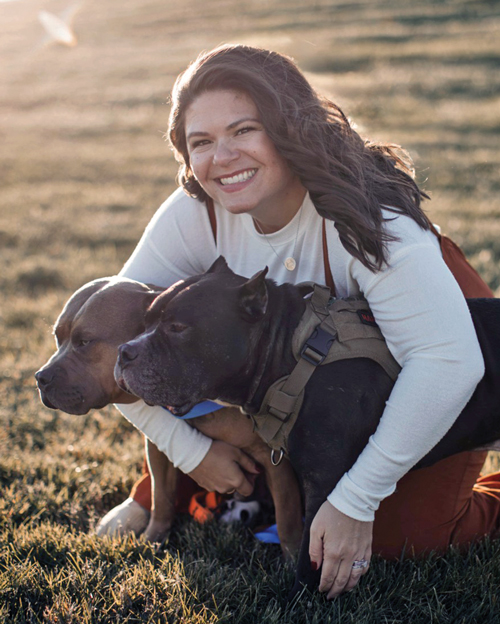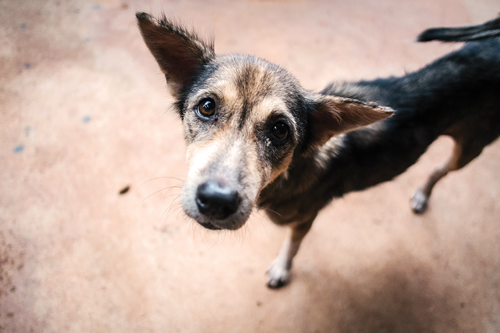In veterinary medicine, gabapentin is utilized for both acute and chronic pain. However, its use in this manner is not backed by strong scientific evidence. There are no FDA labeled indications for gabapentin use in animals, but it is noted as having extra-label use in dogs for ancillary therapy of refractory seizures and as an adjunctive analgesic (1). It has the same extra-label use in cats along with a few additional indications.
In human medicine, gabapentin is utilized to help neuropathic pain. Neuropathic pain is the result of damage to or dysfunction of the nervous system. Gabapentin works by changing the way that the nerves in the brain send messages. The general concept is that if the messages are reduced, then the pain will be reduced. Gabapentin has not been deemed effective for deep pain, also known as nociceptive pain. Nociceptive pain is caused by the stimulation of nociceptors, or pain receptors for tissue injury. This type of pain includes injuries or damage to the internal organs as well as the tissues that make up the body such as skin, muscles, joints, and bones.
There have been several case reports and small studies completed in cats and dogs to evaluate gabapentin for pain control. A 2017 study showed that gabapentin, as an adjunctive analgesic in cats undergoing ovariohysterectomy, did not provide any better pain control than buprenorphine alone or the combination of buprenorphine and meloxicam (2).
In a 2018 study, gabapentin was associated with improvement in impaired activities in osteoarthritic cats, based upon owner perception (3).
A study completed in 2012 in dogs determined that a 10 mg/kg dose given by mouth twice daily following hemilaminectomy did not result in a detectable reduction in pain behavior when compared to opioid analgesia alone (4).
Lastly, a 2015 study provided evidence that perioperative gabapentin reduced the postoperative morphine requirements in dogs following mastectomy (5). The study did cite limitations including the groups being non-homogenous and mastectomy extent differing between the groups.
In human patients, the use of gabapentin concomitantly with opioids has been shown to increase the amount of opioids that are absorbed by the body (6). This has led to gabapentin being denoted as a controlled medication (C-V) in certain states. As of right now, Kentucky, Virginia, West Virginia, Michigan, and Tennessee have reclassified gabapentin as a controlled substance and other states require tracking of gabapentin prescriptions. When prescribing gabapentin for veterinary patients, the clinician should determine what type of pain is being experienced, if the medication will be beneficial, and assess if there is a better treatment option that should be prescribed instead.
References
- Plumb’s Veterinary Drugs. Gabapentin Monograph. Educational Concepts, L.L.C. dba Brief Media. https://app.plumbs.com/drug-monograph/CSJtfV8dnfPROD?section=doses. September 2019. Accessed 8/3/21.
- Steagall PV, Benito J, Monteiro BP, Doodnaught GM, Beauchamp G, Evangelista MC. Analgesic effects of gabapentin and buprenorphine in cats undergoing ovariohysterectomy using two pain-scoring systems: a randomized clinical trial. J Feline Med Surg. 2018;20(8):741-748.
- Guedes AGP, Meadows JM, Pypendop BH, Johnson EG. Evaluation of tramadol for treatment of osteoarthritis in geriatric cats. J Am Vet Med Assoc. 2018;252(5):565-571. doi:10.2460/javma.252.5.565.
- Aghighi SA, Tipold A, Piechotta M, Lewczuk P, Kästner SB. Assessment of the effects of adjunctive gabapentin on postoperative pain after intervertebral disc surgery in dogs. Vet Anaesth Analg. 2012;39(6):636-646. doi:10.1111/j.1467-2995.2012.00769.x.
- Crociolli GC, Cassu RN, Barbero RC, Rocha TL, Gomes DR, Nicácio GM. Gabapentin as an adjuvant for postoperative pain management in dogs undergoing mastectomy. J Vet Med Sci. 2015;77(8):1011-1015. doi:10.1292/jvms.14-0602.
- Eckhardt K, Ammon S, Hofmann U, Riebe A, Gugeler N, Mikus G. Gabapentin enhances the analgesic effect of morphine in healthy volunteers. Anesth Analg. 2000 Jul;91(1):185-91. doi: 10.1097/00000539-200007000-00035. PMID: 10866910.
This month’s column is from Alex Gochenauer, PharmD, FSVHP.




